My Food Bag - CI / CD so far

Where did we start?
- Master trunk
- No tests
- No automation
- No confidence
Where did we land?

Source: https://puppet.com/resources/whitepaper/state-of-devops-report
Where do you land?
Immediate changes made
- Get code onto Github
- Setup TeamCity/Octopus
- Implement gitflow
- Start writing tests
What was good?
- Less deployment surprises
- Testing was bringing more confidence
- Quality was improved
What was bad?
- Gitflow introduced artificial gates
- Most develop -> master merges were rubber stamps
- It slowed down our lead time for changes / MTTR
- Single line changes had to go through hoops
- Cherry picking became a default workflow
- Lots of rebasing
- Big bang releases (scary)
What else was bad?
- "Me too" commits, don't wanna miss the boat
- Same people releasing every time
- Low confidence to do a release
Spot the people releasing
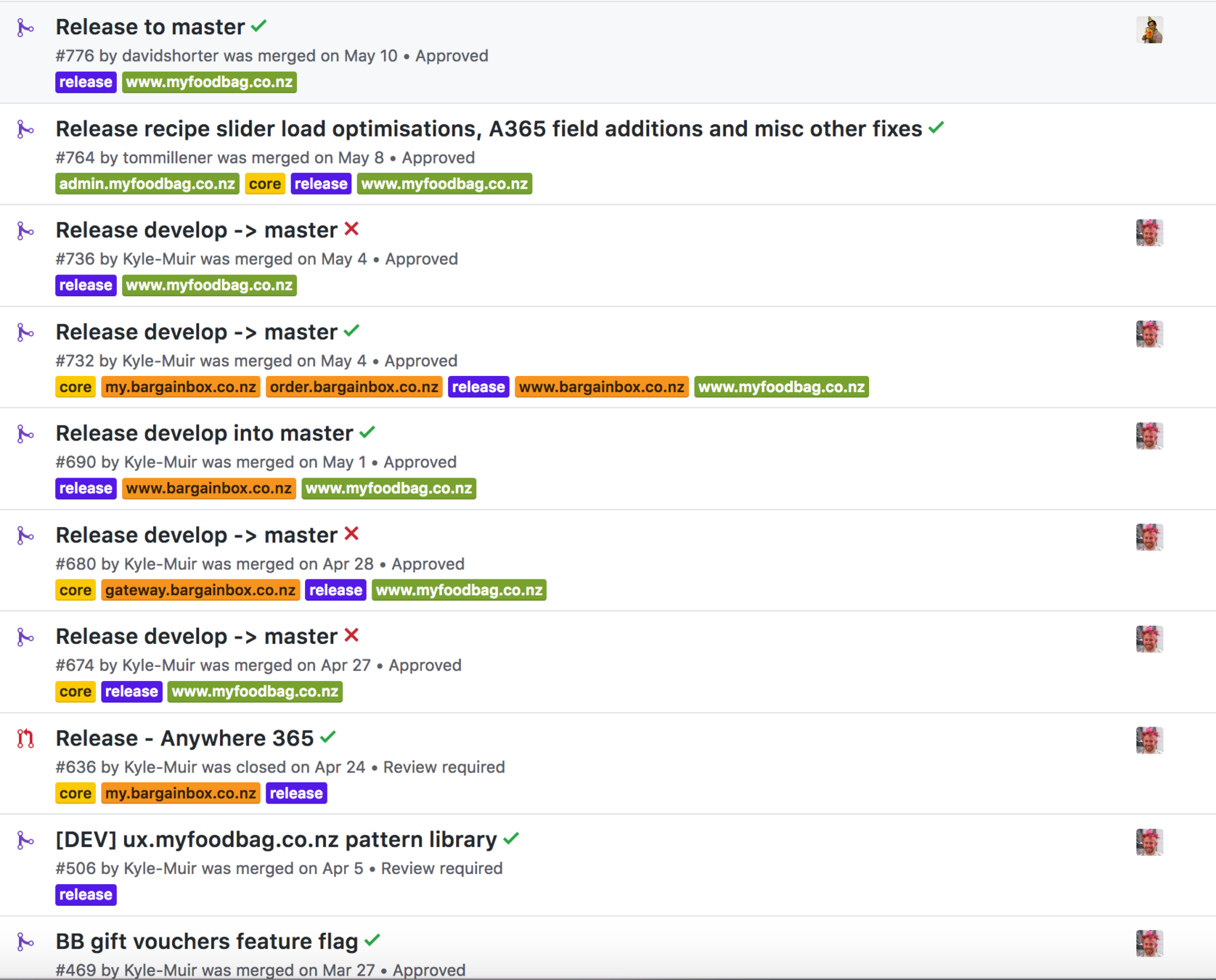
Next suite of changes
- Drop gitflow
- Create docker environments on PRs
- Buy decent build machines
PR process
- PR created
- TeamCity picks up and builds changes
- If a docker label is added to the PR
- Azure automation queues up a docker build
- TeamCity runs a docker build
- Docker environment created for changes in isolation
PR closed
- Azure automation scripts triggered
- Tear down docker database
- Connect to docker VM (Remote PowerShell)
- Stop and remove container
- TeamCity picks up changes to master
- Builds and auto-deploys master to Test environment
Build server upgrade
35% quicker builds across the board
Upgrade build server
Yes one of those dropped by 8 minutes per build
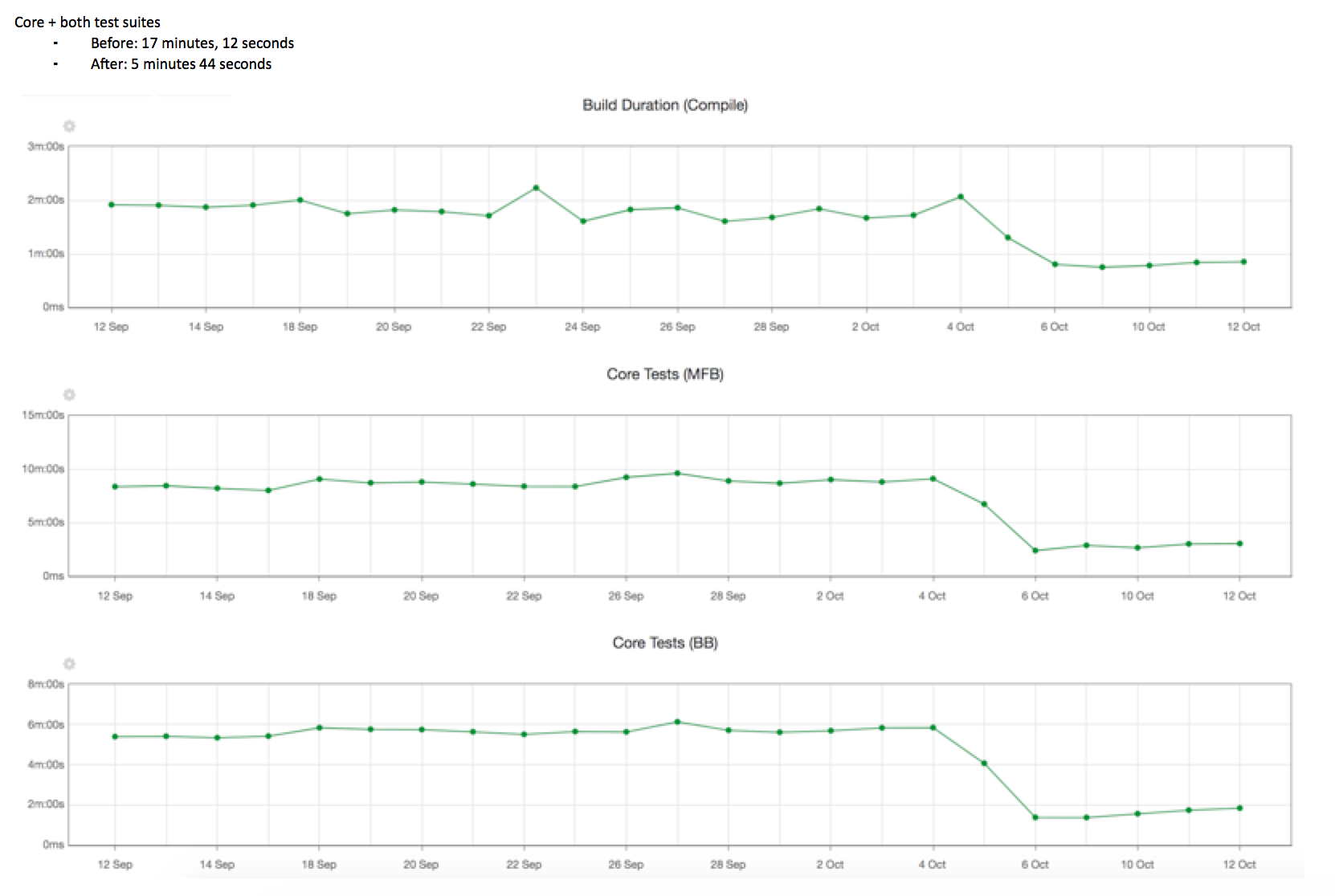
Tell people about it!
Docker?
Why docker?
- Greater isolation of changes
- Smoke tests deployments (uses same packages)
- Greater testing for QA team
- Faster feedback from external business units
- Lead time for changes / MTTR down to <1hr
- Quick, clean teardown
Added benefits
- Clearer understanding of required infrastructure
- Knowledge that deployment would have failed
- Great for throwaway POCs
- No gitflow = greater incidence of refactoring
Most importantly
Removed the need for a develop environment
Current docker dependency tree
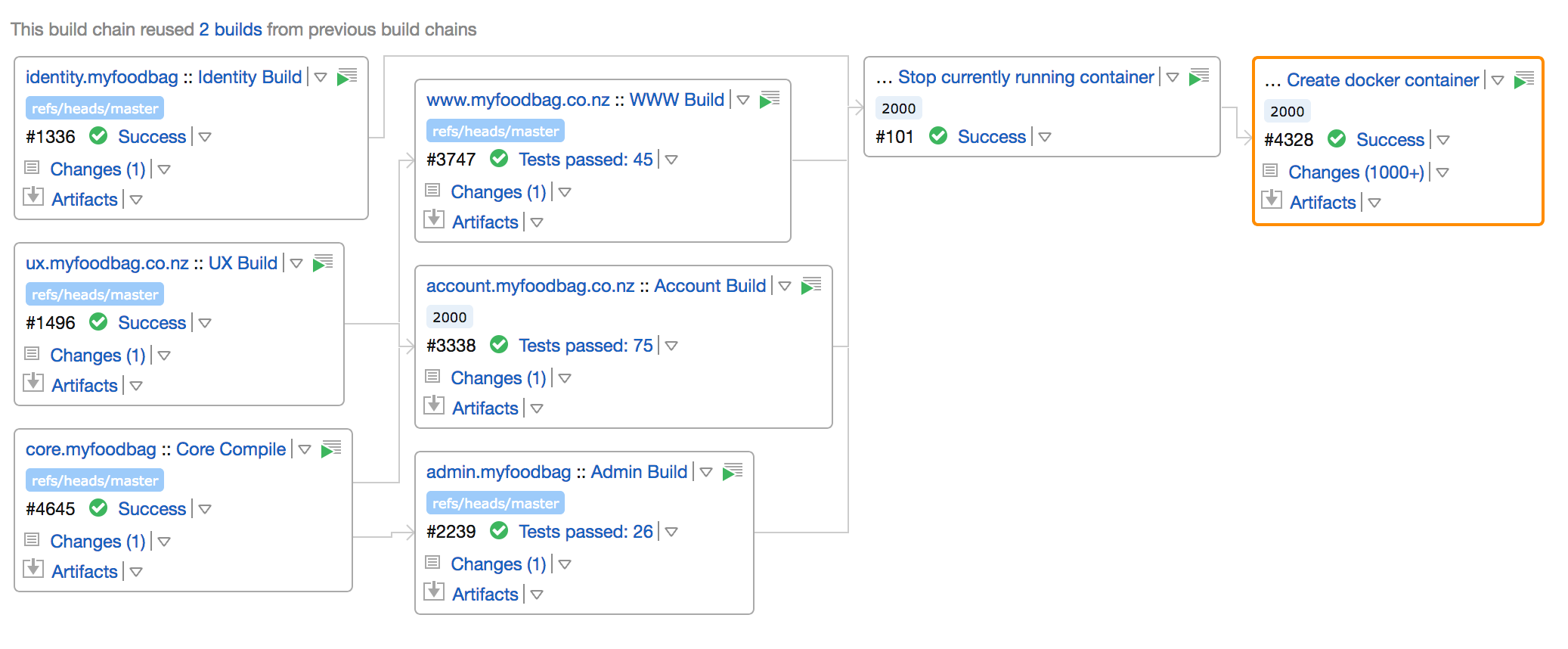
Example output from Azure Automation
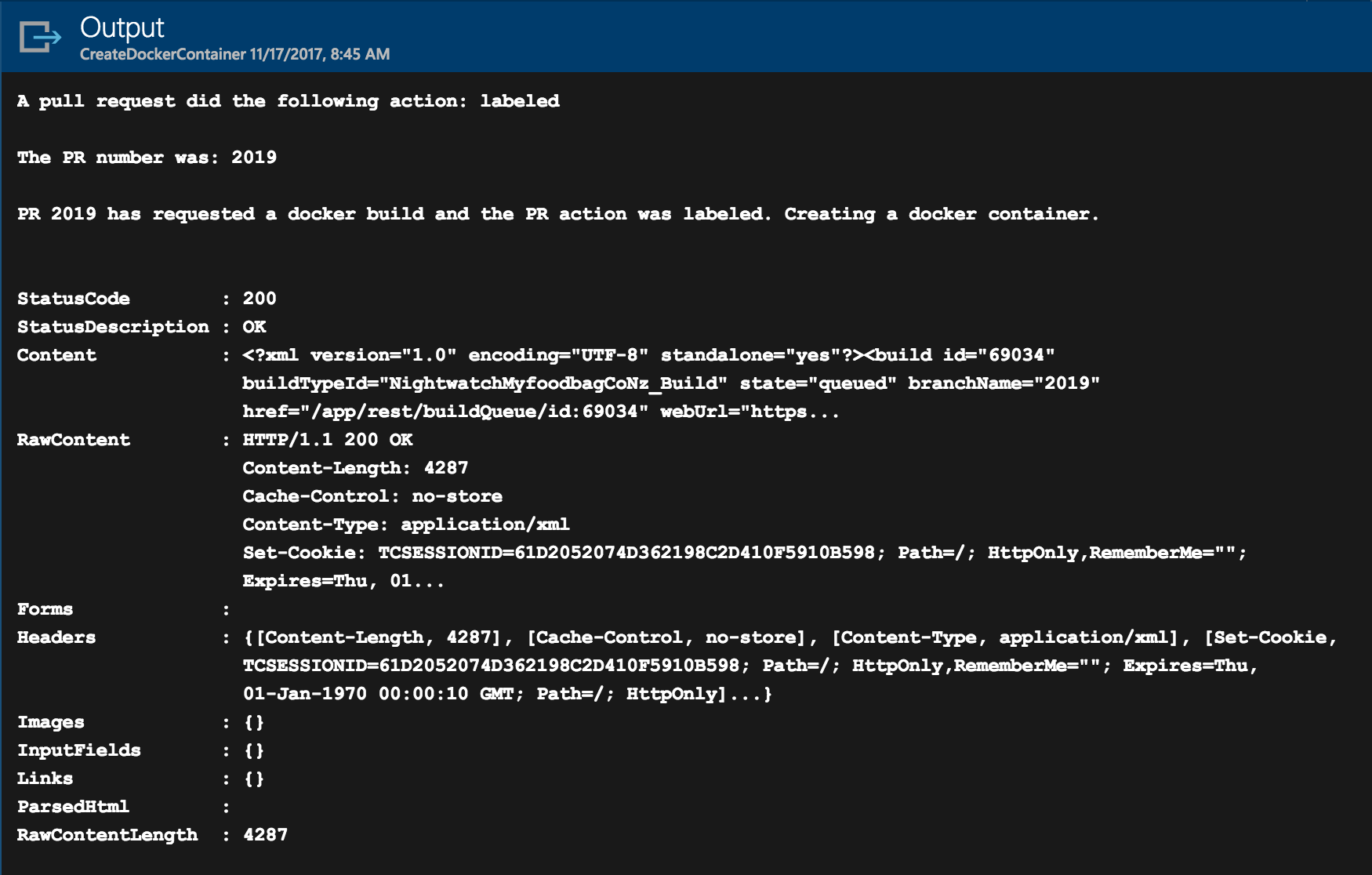
Creation of docker container
What about CD?
How we view CD
- Make releases painless, non events
- Increase quality and stability
- Stop doing work we don't want to do
Octopus Deploy
- Each major project has it's own build/deploy pipeline
- Master is automatically promoted to TEST on green build
- Deploying to production still has a gate (for now)
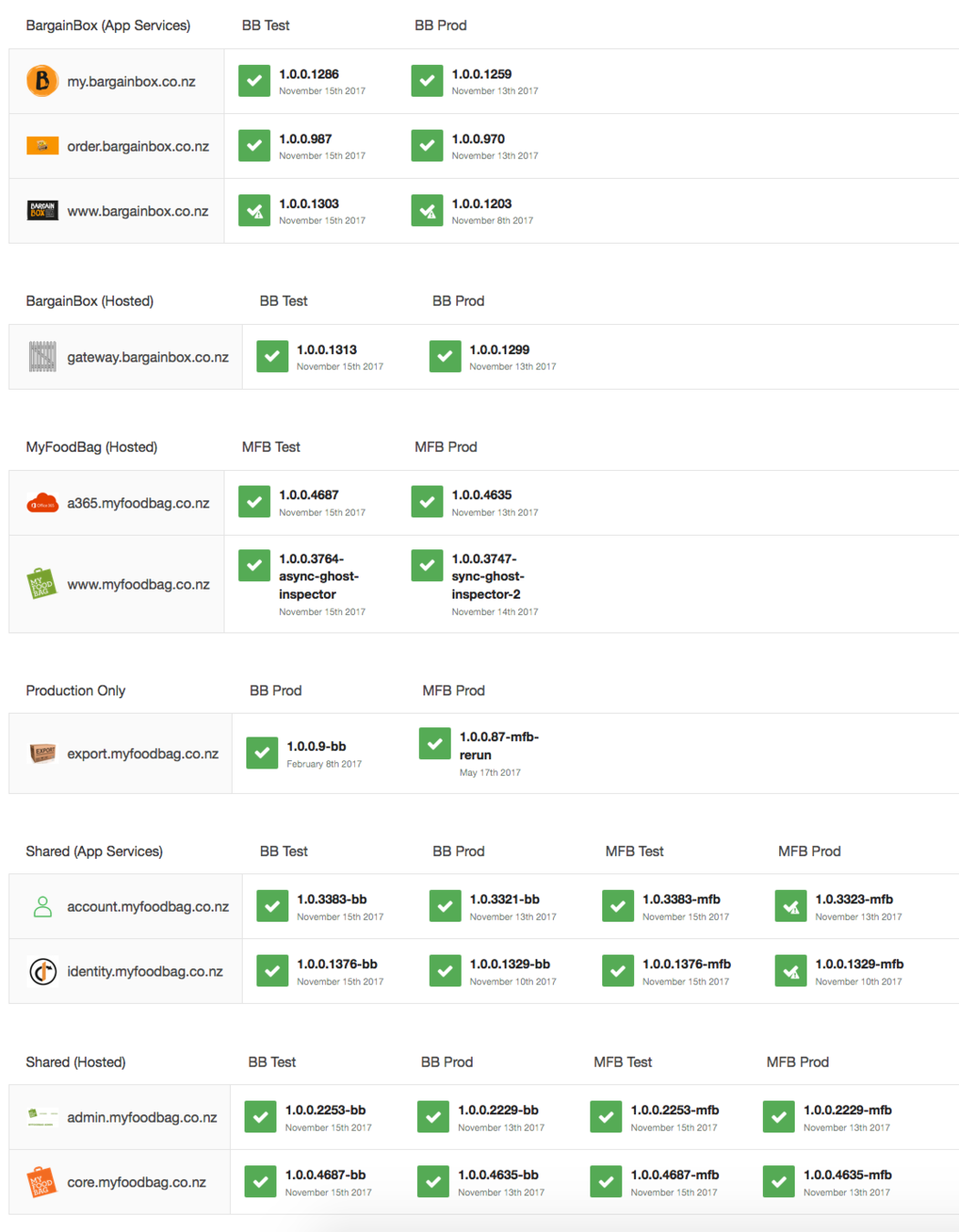
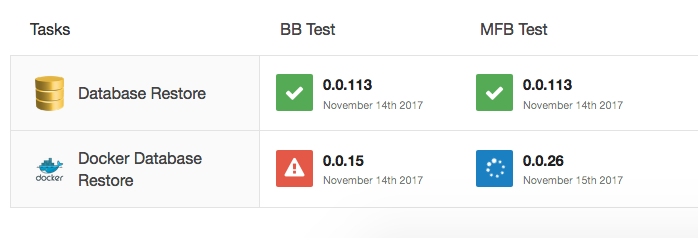
Set up
- Two channels (Bargain Box vs MFB)
- Variables largely controlled by variable sets
- Some development tasks (e.g. restore PROD db)
- Slack integration for failure feedback
The good
- "It just works"
- Not hard to create releases and promote to PROD
The bad
- Easy to miss projects as part of a coordinated deploy
- We still have orchestrated deployments (boo)
- We still have to click the buttons
- Octopus Deploy has some weird limitations
- No scheduled triggers
- Can't deploy "whole projects" easily
- Configuration not checked into source control
How confident are we?
Testing strategy

Proposed changes
- Regression Suite
- Ramp up unit tests
- Remove reliance on Integration tests
Where do we land now?

Source: https://puppet.com/resources/whitepaper/state-of-devops-report